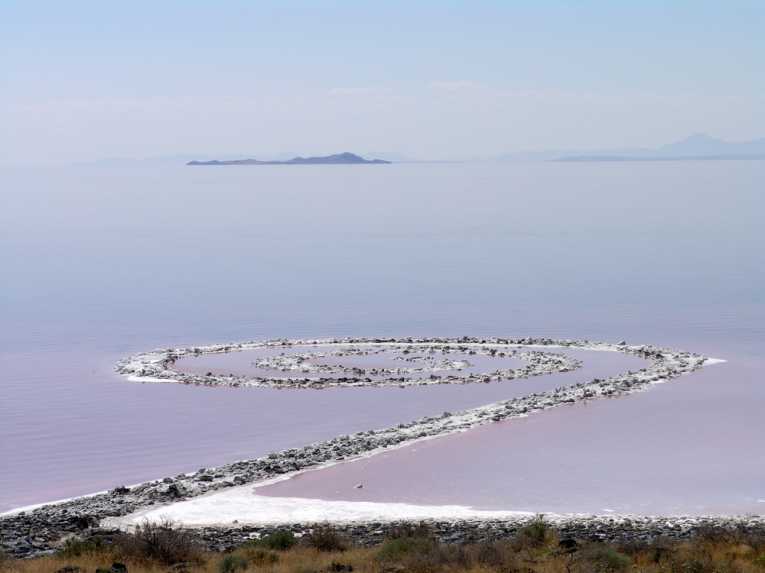I had my first brush with environmental art - or land art, as it is more commonly known, at the tender age of 17 when I was in the midst of an A-level art project. My art teacher was, I think, growing a little sick of the sketch after sketch of close-up details of flowers I was rolling out for my "nature, from a different perspective" theme and suggested I take a look at the work of Robert Smithson as inspiration.
It was the start of what was to become a major passion of mine - not just art, and not just environmental advocacy, but something in between that combined the two and took them both to a whole new level.
Coined 'Earthworks' by Smithson himself, land art is a unique form of sculpture whereby the natural landscape is used to create them and, like the nature it represents, it's all done on a grand and breathtaking scale. In fact, so large are some of these sculptures that they become the landscape themselves, and are left to naturally, gradually erode away into nothing over time.
Probably the most famous work by Smithson is his Spiral Jetty, a magnificent spiral of earth, salt and basalt rock weighing some 6,550 tons. Created in 1970, this awe-inspiring creation still stands to this day, sometimes visible and forming a walkway for visitors to casually stroll across as they wander out into the sea, sometimes completely submerged for months on end by the ever-changing tide at Rozel Point in America where it was built.

A close-up of Smithson's inner circle path on the Spiral Jetty; Credit: © Shutterstock
Smithson may have been the 'leader of the pack', but it wasn't long before other environmentalists emerged. Even to the present day, environmental artists are creating these natural works on a magnificent scale, but the real question is, why?
Sure, environmental art is beautiful to look at, but it's an artist's prerogative to make a statement with his or her work, to put a meaning behind the pretty picture. It comes as little surprise that land art came about when it did, at the end of the sixties in an era when political activism was reaching the masses and people - artists - were starting to realise how much difference one individual could make in the world.
Following on from the late 50's when pop art was all the rage, land art was a return to something far more natural, an answer to the highly commercialised, man-made world that people had found themselves living in. Many artists even went so far as to abandon the traditional setting of an art gallery in exchange for an outdoor presentation where any artist was free to express his or her opinion, and fans didn't have to pay an entry fee to visit.
Environmental art creates a commentary on the way we live, advocating a return to a far more earth-friendly society. Yet it is something of a paradox - these artists are campaigning for us to rediscover the beauty of 'nature' whilst at the same time showing just how man-made this so-called nature can really be!

Part of Three Cairns by Andy Goldsworthy - Credit: © pjw7/flickr
I haven't had a chance yet to see Smithson's Spiral Jetty, the main inspiration for my A-level project, and it looks like if I want to see it I'm going to have to move fast. The tide might be taking its toll, but human sightseers are having a much bigger impact on the jetty, gradually destroying it as they trample across it each year.
Smithson expressed a desire to see his works erode away 'naturally', yet he must have known that people would flock to see the jetty and walk along it. Is this what Smithson really wanted? Is there some hidden meaning about how the human race is destroying the beauty of nature?
I guess we'll never know - Smithson died in a plane crash just three years after the completion of Spiral Jetty, and the environmental movement almost died with him. Luckily, whilst I got out my garden tools and started digging mini spirals for my A-level project, true modern artists such as Andy Goldsworthy are reviving environmental art in all its glory and splendour!
I'm doubtful that the message behind environmental art is strong enough to have a major impact on today's consumer society, but at the very least it will provide us with some beautiful, eco-friendly locations to go visit when we're sick of the city!
What do you think of environmental art? Does it enhance the natural environment, or detract from it?










